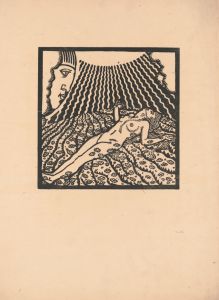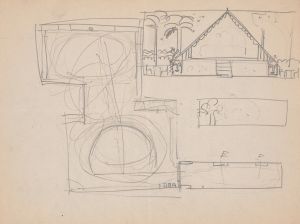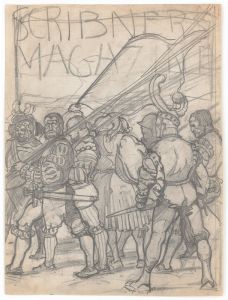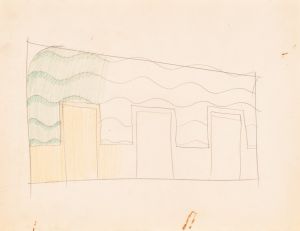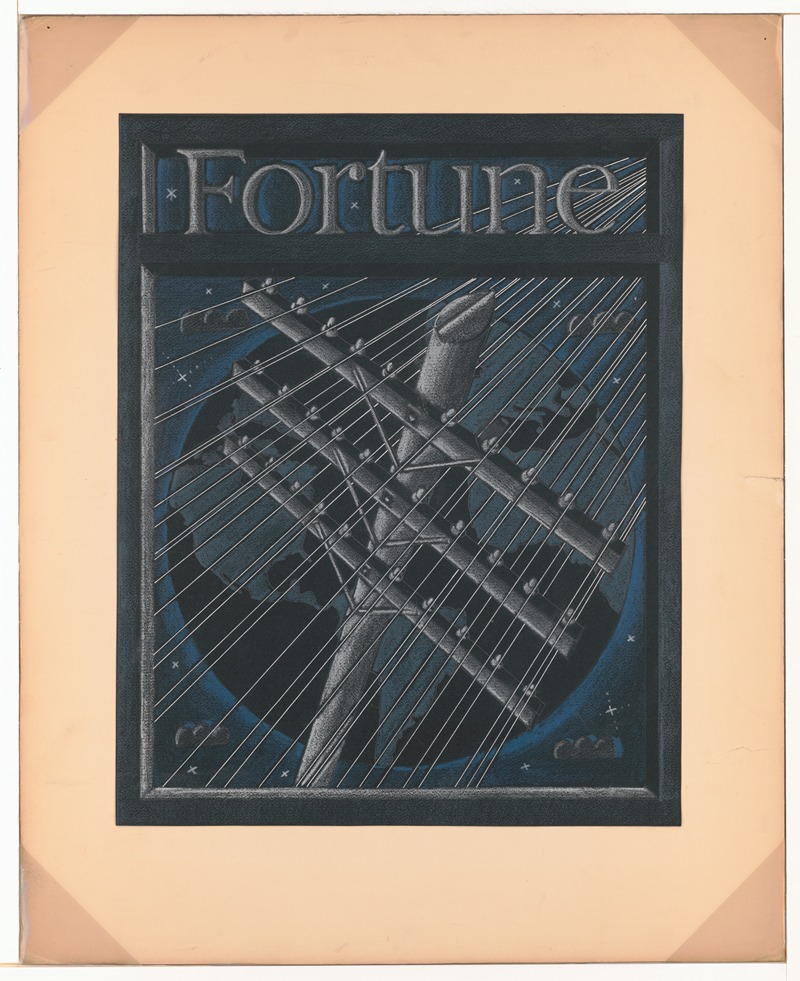
Graphic designs for Fortune magazine.] [Study for cover with large telephone lines superimposed over the globe
A hand-painted replica of Winold Reiss’s masterpiece Graphic designs for Fortune magazine.] [Study for cover with large telephone lines superimposed over the globe, meticulously crafted by professional artists to capture the true essence of the original. Each piece is created with museum-quality canvas and rare mineral pigments, carefully painted by experienced artists with delicate brushstrokes and rich, layered colors to perfectly recreate the texture of the original artwork. Unlike machine-printed reproductions, this hand-painted version brings the painting to life, infused with the artist’s emotions and skill in every stroke. Whether for personal collection or home decoration, it instantly elevates the artistic atmosphere of any space.
Winold Reiss (1886-1953) was a German-American artist and graphic designer known for his work in portraiture, interior design, and graphic arts. One of his notable contributions was his work for Fortune magazine, a prominent American business magazine founded in 1930 by Henry Luce. Reiss's designs for Fortune magazine covers are celebrated for their innovative and modernist approach, blending artistic creativity with commercial appeal.
One of Reiss's significant works for Fortune magazine is the "Study for cover with large telephone lines superimposed over the globe." This artwork exemplifies Reiss's ability to merge complex themes with striking visual elements. The design features large telephone lines that are superimposed over a globe, symbolizing the interconnectedness of global communication and the burgeoning telecommunications industry during the early 20th century. This period was marked by rapid advancements in technology and communication, and Reiss's cover design effectively captures the essence of this transformative era.
Reiss's use of bold lines and geometric shapes in this study reflects the influence of modernist art movements such as Art Deco and Cubism, which were prevalent during the time. The telephone lines crisscrossing the globe not only represent the physical infrastructure of communication networks but also metaphorically illustrate the shrinking distances between nations and the increasing flow of information across borders. This visual metaphor would have resonated with Fortune magazine's readership, which consisted of business leaders and professionals keenly interested in the latest developments in industry and technology.
The color palette in Reiss's study is likely to have been carefully chosen to enhance the visual impact of the design. While the exact colors used in the study are not specified, Reiss was known for his vibrant use of color, which added dynamism and energy to his compositions. The contrast between the telephone lines and the globe would have been designed to draw the viewer's eye and convey a sense of urgency and importance, aligning with the magazine's goal of providing timely and relevant information to its audience.
Reiss's work for Fortune magazine is a testament to his versatility as an artist and his ability to adapt his style to suit different media and purposes. His cover designs are not only visually striking but also intellectually engaging, often incorporating symbolic elements that reflect the themes and issues of the time. The "Study for cover with large telephone lines superimposed over the globe" is a prime example of how Reiss used his artistic skills to communicate complex ideas in a visually compelling manner.
Overall, Winold Reiss's contributions to Fortune magazine highlight the important role of graphic design in the publication's success and its ability to convey sophisticated concepts through art. His work remains an important part of the history of graphic design and continues to be studied and admired for its creativity and impact.





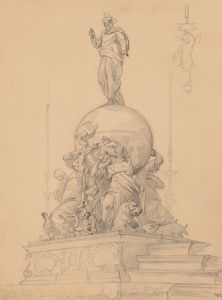

![[Graphic designs for Fortune magazine.] [Study for cover with telephone lines and wings over the globe](/imgs/249241/s/winold-reiss-graphic-designs-for-fortune-magazine-study-for-cover-with-telephone-lines-and-wings-over-the-globe-5933e802.jpg)
![Designs for Hess Brothers Restaurant, Allentown, PA.] [Dinner menu](/imgs/249243/s/winold-reiss-designs-for-hess-brothers-restaurant-allentown-pa-dinner-menu-2d87eef3.jpg)
![Graphic design for cover of Survey Graphic Magazine; ‘Color, Unfinished Business of Democracy’.] [Design with map of Earth and human faces](/imgs/249247/s/winold-reiss-graphic-design-for-cover-of-survey-graphic-magazine-color-unfinished-business-of-democracy-design-with-map-of-earth-and-human-faces-c4efe311.jpg)
![Graphic designs for Longchamps Restaurants.] [Cocktail card](/imgs/249257/s/winold-reiss-graphic-designs-for-longchamps-restaurants-cocktail-card-a188d857.jpg)
![Designs for menu for Café Bonaparte, Beaux-Arts Apartments, 310 E. 44th St., New York, NY.] [Sketches for Café Bonaparte menu](/imgs/249316/s/winold-reiss-designs-for-menu-for-cafe-bonaparte-beauxarts-apartments-310-e-44th-st-new-york-ny-sketches-for-cafe-bonaparte-menu-a75d30c8.jpg)
![Drawings for proposed decorations of Mike Lyman’s Restaurant, 424 W. Sixth St., Los Angeles, CA.] [Drawing #8, playroom elevation N and O](/imgs/249339/s/winold-reiss-drawings-for-proposed-decorations-of-mike-lymans-restaurant-424-w-sixth-st-los-angeles-ca-drawing-8-playroom-elevation-n-and-o-2e0cd08a.jpg)
![Graphic designs for Scribner’s Magazine cover, Medieval Festival theme.] [Colored drawing of men with medieval clothing and weapons](/imgs/249357/s/winold-reiss-graphic-designs-for-scribners-magazine-cover-medieval-festival-theme-colored-drawing-of-men-with-medieval-clothing-and-weapons-3e525bc9.jpg)
